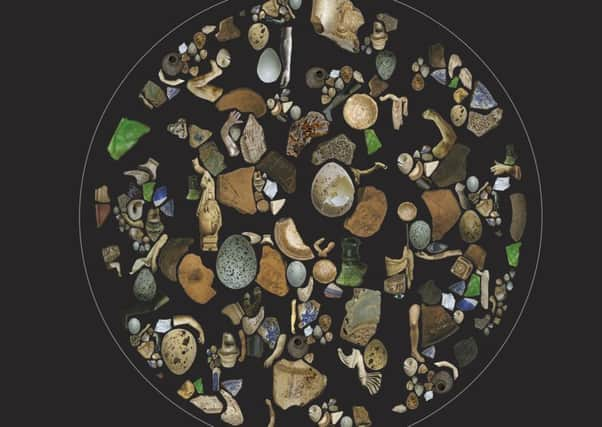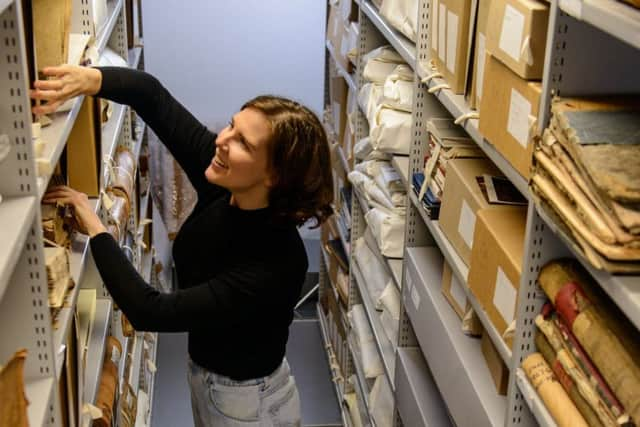Artist delves into museum archives to tell the stories of ex-pat Scots


Not so long ago, almost every sitting room in Scotland contained a china cabinet. You can still see them, empty and unwanted, in charity shops and the back rooms of auction houses, their glass doors etched with flowers and curlicues, their interiors shelved. They once housed family memories that spilled beyond the photograph album; sporting trophies and souvenirs, brass ornaments, gold-rimmed teacups, the top layer of the wedding cake, saved for a christening; gifts from distant lands where folk had gone to seek their fortunes.
The origins of the cabinets’ treasures were not always clear. Whose baby curls nested in the silver locket? What campaign were those medals from and was there blood involved? Who sent home the boomerang with its painted motto, A Present from Brisbane? To divine the answers was to jigsaw together a glimpse of the past, a bit of family history.
Advertisement
Hide AdChina cabinets went out of fashion, their custodians died and bit by bit the souvenirs, trophies and memento mori were distributed amongst younger branches of the family who held them dear or moved them on. Memory is fickle. Generations succeed each other. The origins of personal treasures become murky. The time comes when no one in the family even remembers the purpose of a once cherished object. But the need to commemorate our lives, and the lives of those we love persists. Who does not have a box of memories under the bed or on top of the wardrobe in preparation for the day when we need to remember – the day when we need to be remembered?


Kate Scardifield’s Ley Lines project engages with our collective memory of links between Scotland and Australia partly through acknowledging these gaps. Museums and archives are the china cabinets of communities and nations. Scardifield was given access to Fife, West Kilbride, Scottish Borders and Falkirk local collections and archives. Ley Lines places historic artefacts and the new work they inspired side by side, inviting us to find connections between them. The result is not a dot-to-dot drawing where a single line or route is correct. The artist has her own perspective, but she is also inviting us to use the work as a conduit through which we can form our own narratives.
The links between Scotland and Australia are longstanding. It is estimated that between 1832 and 1850 around 36,000 Scots uprooted themselves and crossed the world in search of a new life down under. In recent times Scotland provided a ready supply of £10 Poms to Australia. People travelled far from family and friends, in the hope of adventure and the prospect of escaping poverty for a better life. Propaganda promised a land of sunshine and plenty, but emigrants often discovered they had swapped one form of hardship for another. Many £10 Poms returned home, but others remained. They married and raised families whose accents contained no trace of Scotland. New china cabinets and memory boxes came into being on the other side of the world, containing objects that might have been considered mundane in Scotland, but which took on treasured status by dint of their journey across the world and the inability to easily replace them. Sometimes the objects survived long after emigres had lost touch with their families in the old world.
In her poem “Forget It,” Kathleen Jamie asks, “Who were the disappeared? Whose the cut-throat/razor on the mantelpiece, what man’s coat hung thick with town gas, coal in the lobby press?”
For Australians, whose roots do not reach deeply into the country’s soil, categorising themselves as Scots might help form a sense of identity. But the history of Scottish settlers in Australia goes beyond economic migration, the search for a better life. It includes colonialism, land grabs, stolen children and genocide. These histories are hard to digest. Easier to forget them, we might think, and focus on the future. After all, these things happened far away and long ago, “yonder awa awa” as the poet Malika Booker writes in her poem of the same name.


The past is past, but history persists. Visitors to Ley Lines will envy Scardifield’s access to local collections’ archives. Who wouldn’t like to walk through the museum after hours, slip into the store rooms and rifle through their contents? Nevertheless our excitement would surely be tinged with fear. Museum artefacts are not alive, but they are not quite dead. The past inhabits them. Like ghosts who have lost their earthly inhibitions, the exhibits have stories to tell that we might rather not hear.
Advertisement
Hide AdScardifield’s journey through the local collections and archives of Fife, West Kilbride, Scottish Borders and Falkirk acknowledges the complexity of Scotland and Australia’s shared history. It embraces the pleasure of making and materials. Ley Lines recognises the human urge to collect and classify which may grow stronger, the further individuals travel from their roots. By using local collections and archives to trace threads between Scotland and Australia, it reminds us of the richness of mutual differences.
A poignant tradition marked the embarkation of £10 Poms setting sail from Scotland to Australia. The travellers stood on deck, clutching one end of a ribbon. The other end was held by a family member standing on the quayside. As the ship set sail the ribbons stretched, tightened and snapped. Links between people are not so easily broken. Kate Scardifield’s Ley Lines invites us to make connections.
Advertisement
Hide AdLey Lines is at St Andrews Museum, St Andrews, until 3 March; the Scott Gallery, Hawick Museum, Hawick, 23 March until 18 May; and The Park Gallery, Callander House, Falkirk, 25 August until 21 October